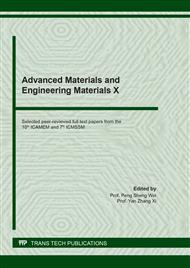p.464
p.473
p.480
p.485
p.501
p.506
p.512
p.519
p.525
A Failure Analysis Case of Regeneration Gas Heater Leakage
Abstract:
In this paper, the physical and chemical analysis method was used to analyze the leakage of a regeneration gas heater device accident. The result shows that this device was heated seriously at local area, and oxidized severely. The carbon content around the leakage is obviously lower than the limit of standard, and the grain deformation at crack tip of the leakage is obvious.It shows that reason of device failure is caused by typical plastic Instability, and low carbon content leads to insufficient mechanical properties at high temperature. According to data from manufacturer, the unreasonable arrangement of thermo-couples may be the root cause of this leakage.It can be considered that replace the higher grade materials conservatively, while optimizing the arrangement of thermo-couples.
Info:
Periodical:
Pages:
525-529
Citation:
Online since:
November 2021
Authors:
Keywords:
Price:
Сopyright:
© 2021 Trans Tech Publications Ltd. All Rights Reserved
Share:
Citation:


